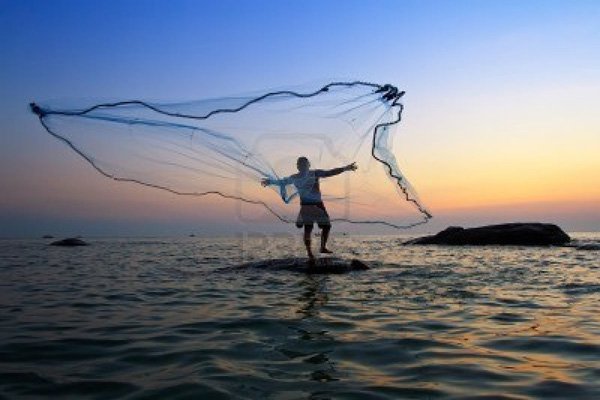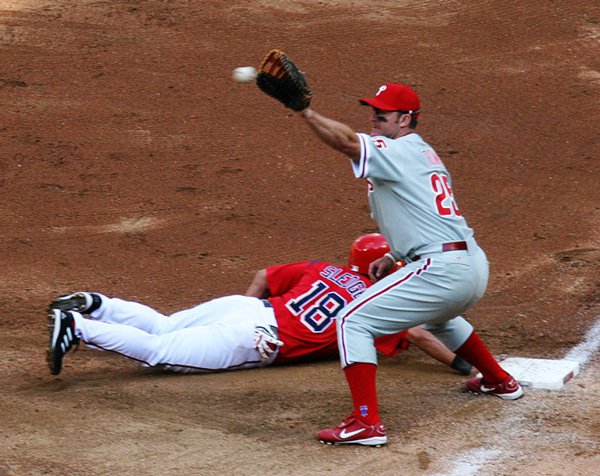Fishing the Float & Fly for Smallmouth
By LOY MILAM
It?s funny how terminology plays such an important role in preconceived notions we develop. The initial reaction of most bass fishermen when Float-and-Fly is mentioned is to immediately dismiss it by saying something like, ?I don?t fly fish.? Perhaps it is this common misconception that has kept the general population of bass anglers in the dark concerning this big smallmouth bass technique. Trust me? this ain?t your grandfather?s fly fishing. The truth is that the Float-and-Fly isn?t fly fishing at all, but a technique that produces some of Dale Hollow Lake?s biggest bronzebacks of the year each winter, beginning around Thanksgiving and running through March.
Before we get into the particulars of the technique, let?s look at the daunting objective that the Float-and-Fly attempts to accomplish. Since it is a winter technique, it targets bass in their most lethargic state. With water temperatures sometimes in the 40s, smallmouth bass are suspended, their metabolism is the lowest it will be all year, and they will not chase anything. Bass anglers know these are the hardest fish to catch. If you entice them into biting, your presentation has to be S-L-O-W and your lure must be very convincing. But even a cold, lethargic, suspended smallmouth with a low metabolic rate will bite if you dangle a life-like presentation in front of it long enough. The Float-and-Fly does exactly that; it presents a fly at the level the fish is suspended that simply sits and ?breathes? until the bass gives in. Now let?s talk tackle and technique.
First, we need to get the fly out of the ointment. The lure component of this technique is not a Pheasant Tail Nymph or a Light Cahill. In fact, it?s not a fly at all? it?s a jig. So why call it a fly? Perhaps the answer to that question lies in the popularity of the ?bread and butter? lure produced by the late Elmer Thompson who founded the Thompson Fishing Tackle Company in Knoxville, Tennessee in 1952. Thompson?s Doll Fly was a leadhead jig dressed with polar bear hair. At the height of production, Thompson?s company produced as many as 75,000 jigs per day and a staggering 27.5 million per year. The term doll fly became synonymous with any hair-dressed jig. The deadly hair jig gained popularity with crappie fishermen around the country, but it also caught on with some savvy Tennessee smallmouth anglers; the legendary Billy Westmoreland caught his largest bronesback (10 lbs. 2 oz.) on a yellow doll fly tipped with a pork rind.
The history of the Float-and-Fly technique for smallmouth bass is also of Tennessee origin. Jim Dicken gives credit for the original concept of the technique to an East Tennessee tackle store owner named Charlie Nuckols. According to Dicken, Nuckols came up with the idea when East Tennessee crappie fishermen came into his shop complaining about smallmouth breaking off their doll flies while fishing for crappie. Nuckols began experimenting with various ways to use hair jigs to tempt suspended winter smallmouth. The result was the Float-and-Fly technique which has evolved over the past few years, aided by Tennessee anglers such as Bob Coan and Stephen Headrick. ?I guess the biggest contribution I have made to the technique is pouring the jigs on a #2 hook to get a little more bite in the rig,? says Headrick. ?Charlie [Nuckols] used the aspirin head jig with a smaller hook which is normally used by crappie fishermen, so I beefed things up to handle smallmouth by going to the #2 hook.?
While individual techniques may vary among anglers, the basic setup for the Float-and-Fly technique involves a sturdy drop line (Fire Line 8-10 pound test) from a spinning reel and 8-11foot flexible rod, connected to a three-way swivel, a leader line of 6-pound fluorocarbon tied to one of the remaining eyes of the swivel at a length equivalent to the depth of the bait fish and suspended bass (8-18 feet), a customized Styrofoam bobber clipped to the remaining eye of the swivel, and a 1/16 or 1/32 ounce hair/feather jig tied to the end of the fluorocarbon leader. Bob Coan is the mastermind behind the customized bobber. The problem with the Float-and-Fly technique is that many suspended smallmouth simply swim up from below the jig and mouth it on the way up, thus the bobber does not go under. To offset this, Coan cut his Styrofoam bobbers in half and added weight to the inside-top of the bobber, thus the weight of the jig would keep the bobber upright. With the now top-heavy bobber, when a fish would ?mouth? the jig and move upward in the water table, it would remove the weight on the bobber and the bobber would tip over on its side to indicate a strike. Problem solved! ?Bob is the one who came up with putting weight in the top of the bobber to indicate when a fish had taken the jig,? says Headrick.
The jig used in the Float-and-Fly technique is also a specialty item. Most are poured using a Do-It Model JM-7-A minnow head jig mold in 1/16 or 1/32 ounce sizes on a #2 Mustad 32756, or Eagle Claw 570 or 575 Aberdeen jig hook. Combinations of craft hair or duck feathers are tied onto the jig to simulate small bait fish which Dale Hollow smallmouth feed on in the winter.
Bluff banks and deep points are an excellent starting place to search for suspended winter smallmouth at Dale Hollow. I have found that when the Army Corp of Engineers is generating that smallmouth tend to position themselves on deep banks on the main lake above the river channel to take advantage of the current and catch a meal that might float by. When the generators are not running bass may still be positioned on the main lake, but also may move onto deep secondary points.
Successful anglers use their graph to pinpoint the location and depth of either suspended fish or baitfish. Knowing this preferred depth allows the angler to determine the length of the fluorocarbon leader line so that the jig can be dangled at the exact position bass are positioned in the water table.
Presentation is key? remember that it must be S-L-O-W. Even if you think you are fishing slowly, S-L-O-W down even more. The beauty of the craft hair jig is that craft hair does not absorb water and will ?breathe? with the slightest motion, even the almost undetectable current will cause the hair to pulsate. If the wind is dead calm, the angler can twitch the rod slightly every now and then and then allow it to sit again. When there is a breeze, allow the wind to carry your bobber and the chop on the surface to impart action to your jig.
The longer rod length allows the casting of the long leader line, but the limberness of the rod also takes the brunt of the fight of the fish. Set the drag on your spinning reel so that it keeps some pressure on the line and keeps the rod bent during the fight, but no so tight that a sudden lunge of the fish will break the line.
Prime water temperature for using the Float-and-Fly for smallmouth is from 55 down. ?I have caught some of the biggest smallmouth of the season with the water temperature at 55 degrees,? says Headrick. Once the temperature drops below 50 degrees the duck feather jigs seem to be better producers than those tied with craft hair.
Dress warm, take along a thermos of hot coffee and perhaps a packet or two of Hot Hands, and don?t get upset if you land a crappie or two in the process.
Loy Milam is a Coast Guard Charter Boat Captain and licensed Kentucky/Tennessee fishing guide, web site www.loymilam.webs.com
Pre-Spawn Fishing Out Of A Kayak
Targeting Barren River Lake (KY) Crappie


